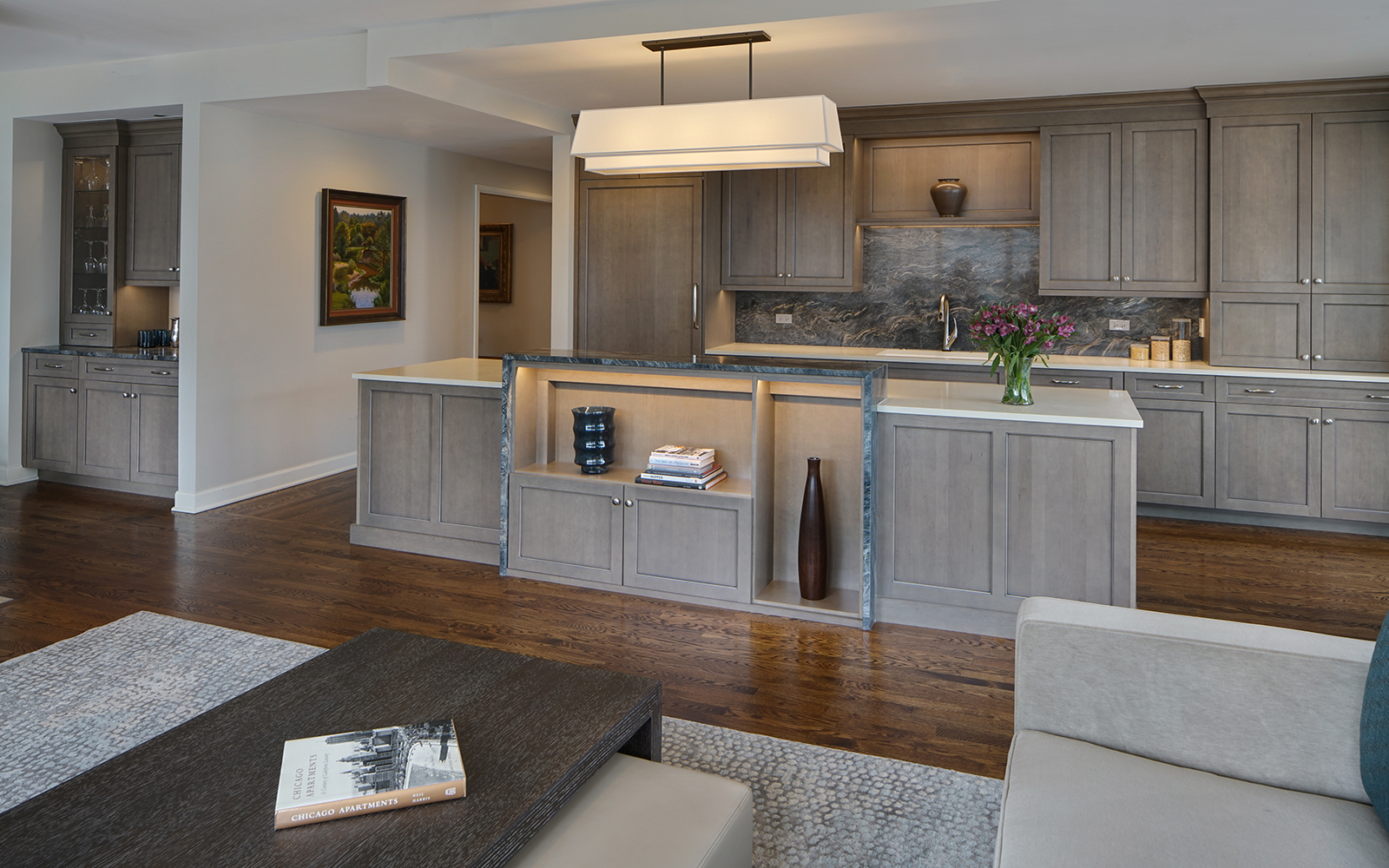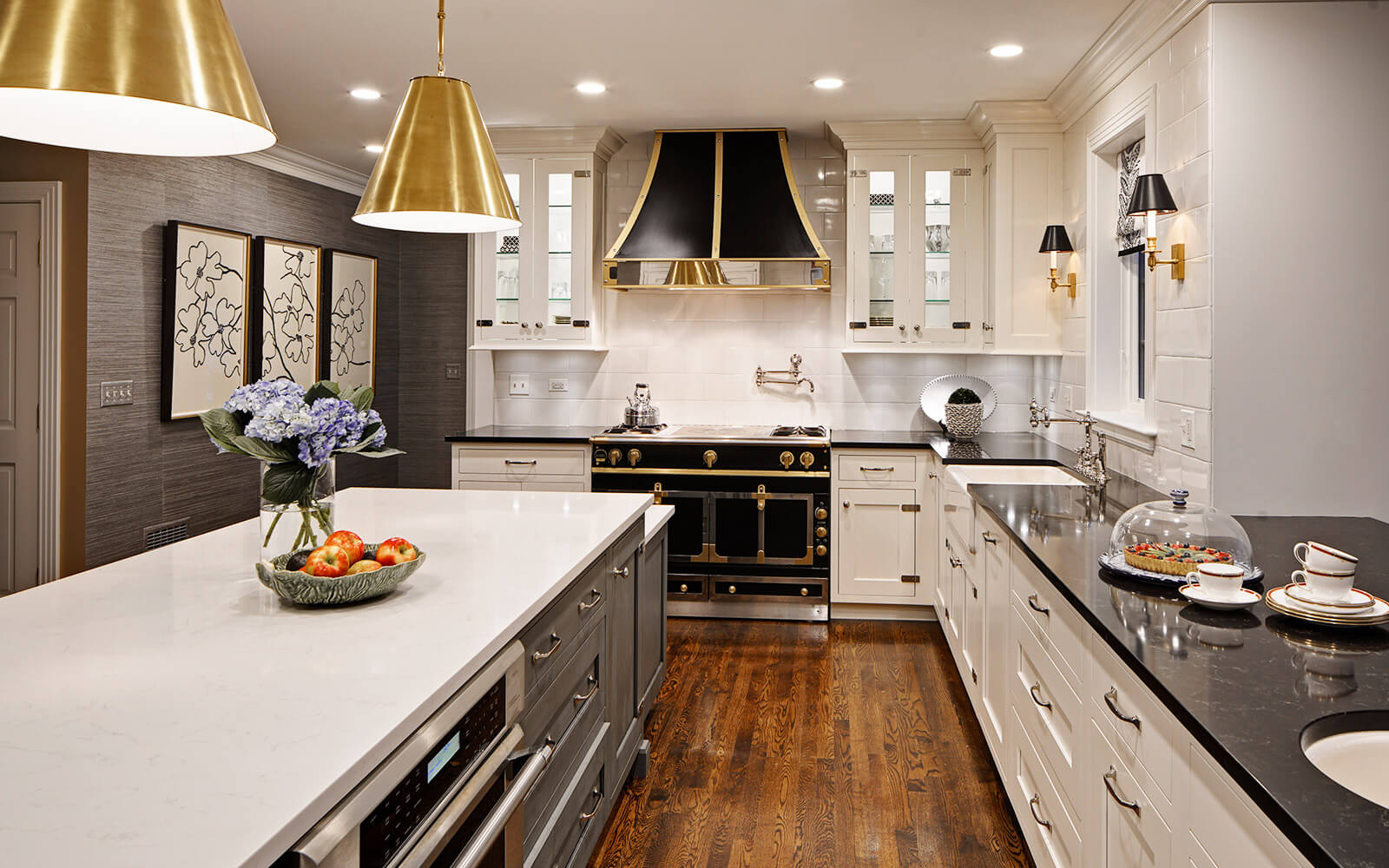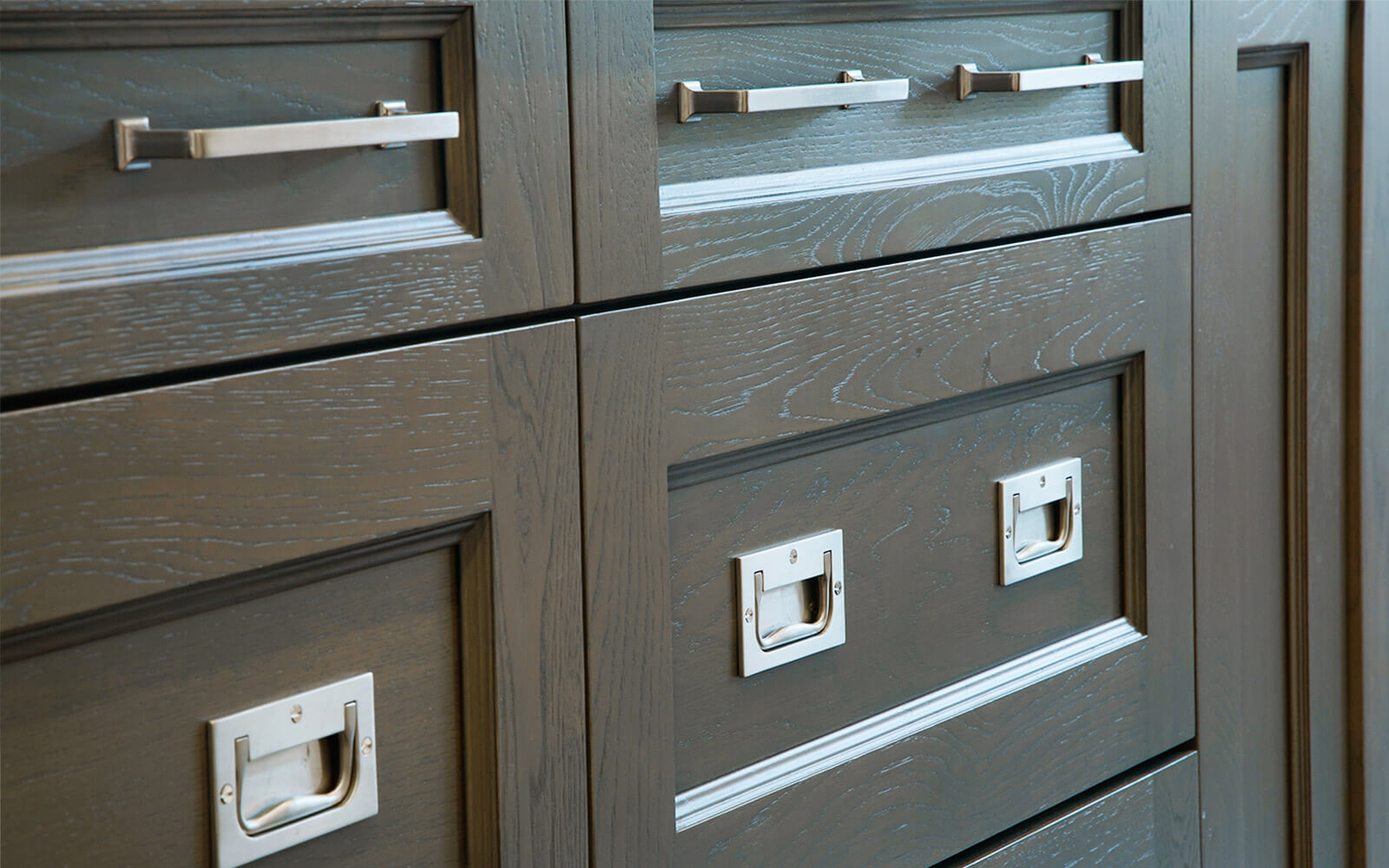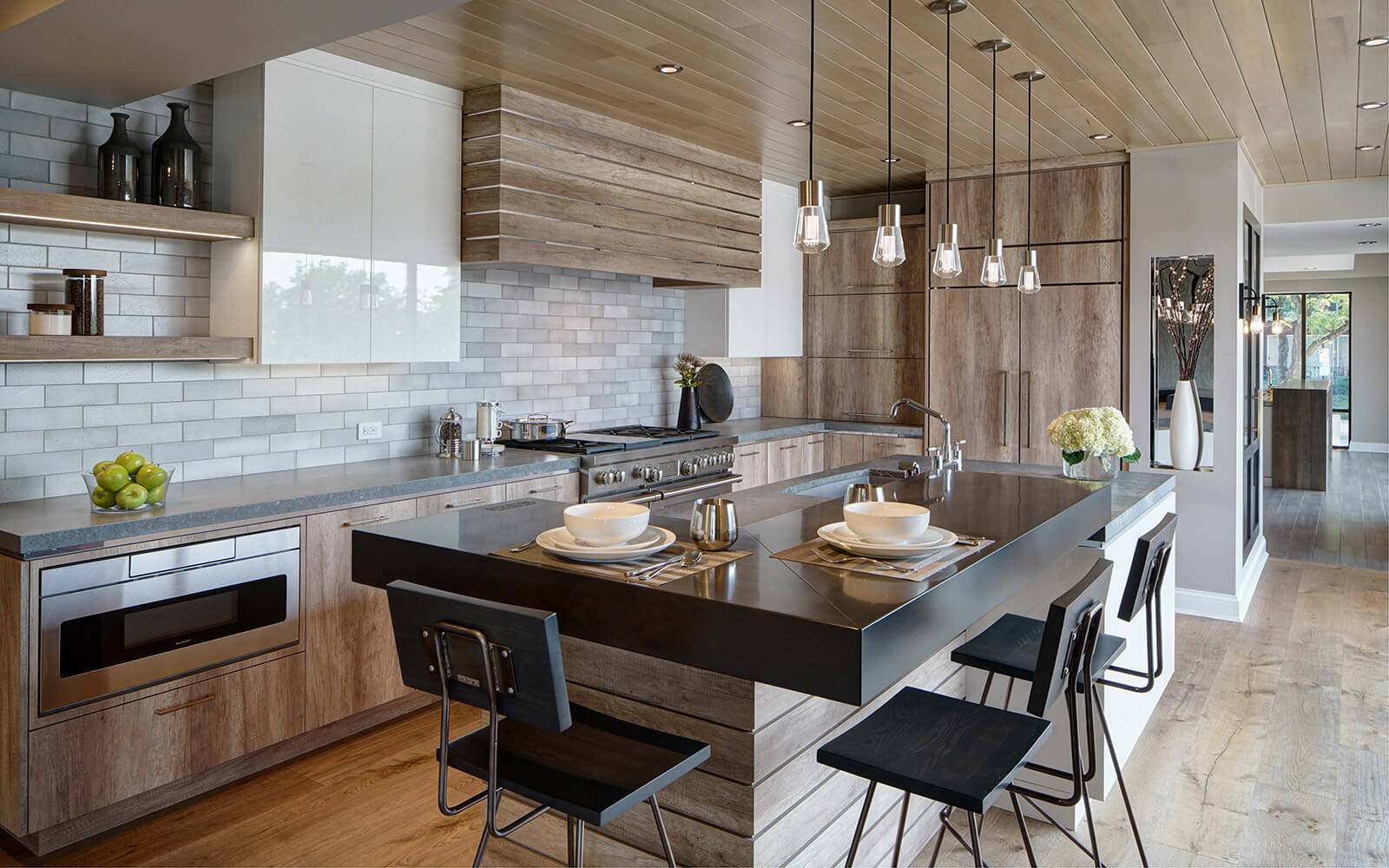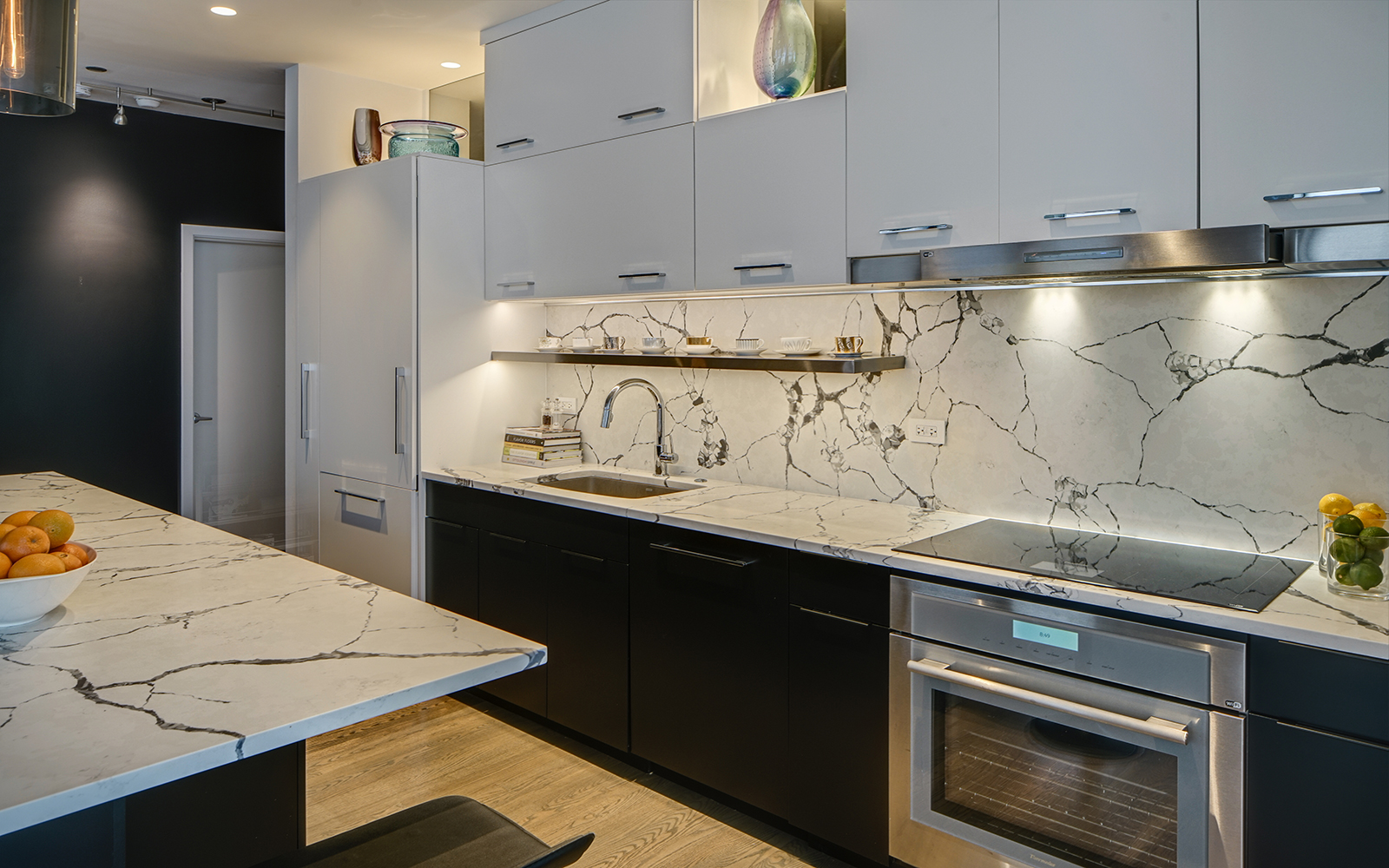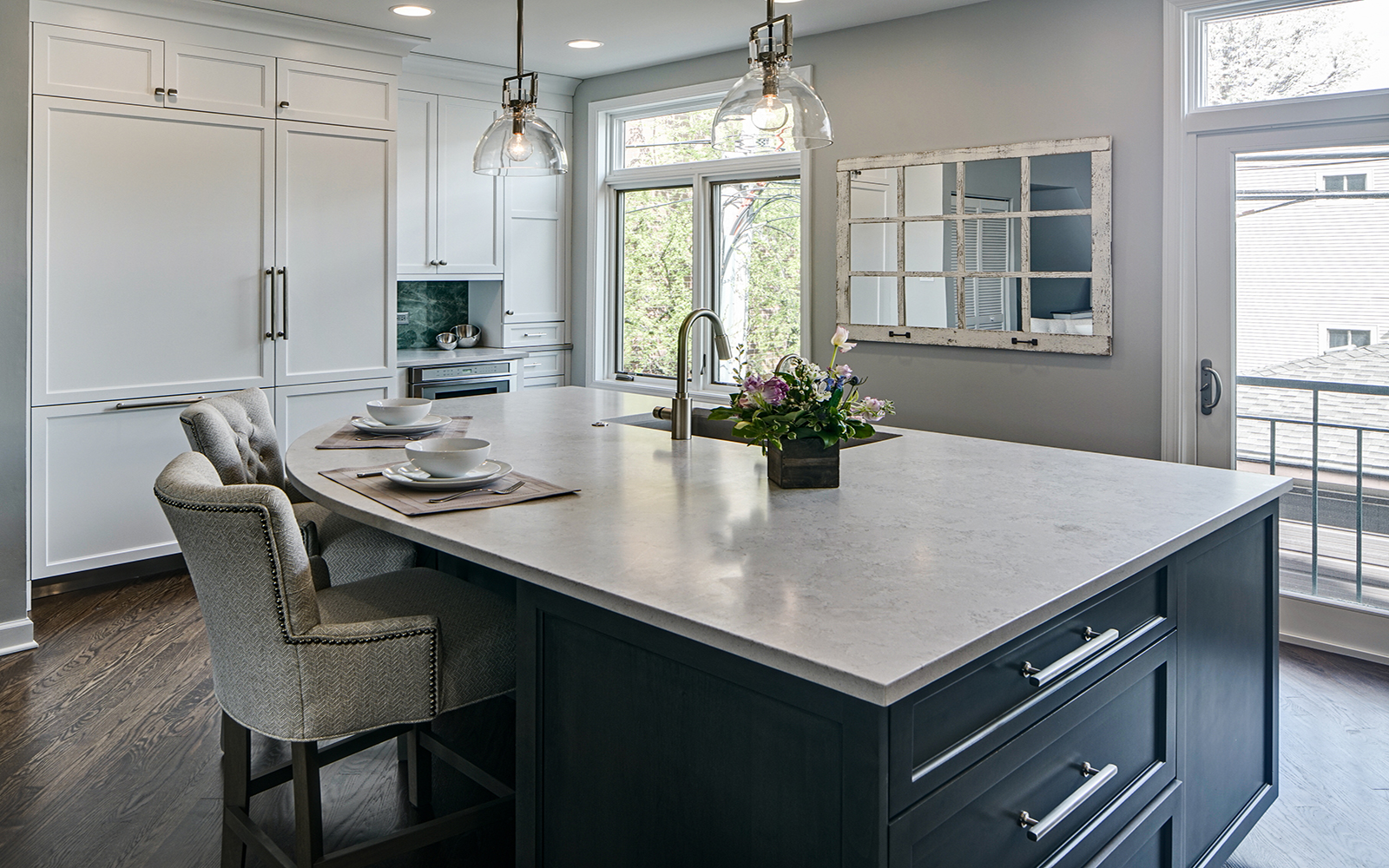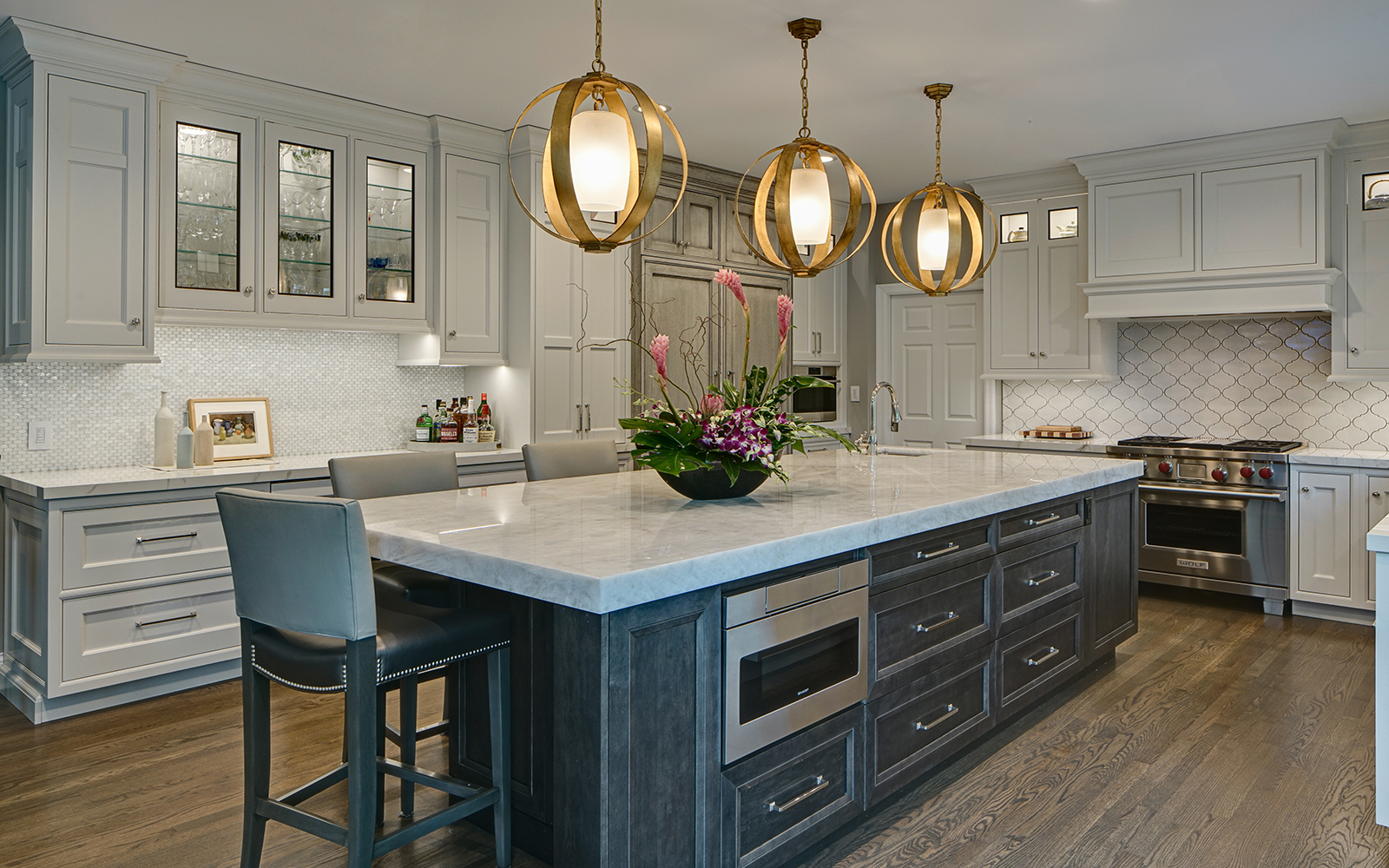Guide to Choosing Cabinets
LED lighting? Kitchen cabinet on wheels? Storage racks and baskets? The guide to choosing cabinets these days is equal parts creativity and construction. It’s helpful to keep in mind certain kitchen cabinet buying tips.
Consumer demand surrounding the kitchen cabinet continues to grow, according to a report by Mordor Intelligence. It may surprise you to learn that 41 percent of homeowners choose a custom cabinet compared to just 12 percent who purchase stock cabinets, which are less expensive and very limited. With custom cabinets, you can express your kitchen cabinet style exactly how you like.
Style isn’t the only consideration, however. The perfect cabinet is a stylish marriage of form and function, which is why even more homeowners are choosing custom cabinetry these days. Every family has different needs for their kitchen, and prefabricated cabinetry only offers a one-size-fits-all solution.
This guide to choosing cabinets explains style, material, cost, design, and everything you need to know about kitchen cabinets –right down to the knobs and hinges.
Kitchen Cabinet Style
An important first step in choosing cabinetry is to think about the available kitchen design styles. Of course, you want your cabinets to match the aesthetic of the room. Decide on which cabinet style you prefer, then look at the kitchen cabinet door treatment that matches best with your choice.
Generally, three main kitchen design styles influence most kitchen remodel projects:
There is no “right” answer. The choice depends on what feels right for you and your family.
Traditional Cabinetry
Think eighteenth-century England or French château. These styles form the root of traditional cabinet design. A traditional cabinet has a classic, handcrafted feel and often ornate carved designs.
Traditional design might showcase detailed molding, the long, narrow piece of wood that covers the space between the cabinet and the ceiling. A popular type of traditional cabinet is the Shaker cabinet. It features a minimalist design with a raised panel, meaning the cabinet door style has a center panel that sticks out from the surrounding wood.
Contemporary Design
Conversely, the contemporary cabinet is sleek and minimalist. Contemporary style, also known as “modern,” features straight, basic lines. Modern designs do without ornamentation and have flat drawer fronts, simple trim, and sharp edges.
As for color, a contemporary cabinet generally has a neutral color palette but may show a pop of color. And rather than relying exclusively on wood, the contemporary cabinet often includes glass or metal in its design.
Transitional Cabinets
Transitional kitchens blend old and new. Maybe you like the color palette of contemporary but want a shape that has a more classic feel. The transitional cabinet moves away from the sharp angles of contemporary design and embraces the rounded look of traditional. Plus, you can combine the materials of both styles, with natural wood as well as manmade materials.
Cost
Any guide to choosing cabinets will include your budget. And remember to leave room in the budget for installation. To estimate cost, multiply the price per linear foot by the total footage. There are two primary factors involved in the cost per linear foot: type of material and level of customization.
Types of Cabinets
If you choose to install custom kitchen cabinets, you pick every detail. You dictate size, style, materials and every possible accessory. Kitchens generally feature both the base cabinet and wall cabinet. A base cabinet rests on the floor and supports the kitchen countertop. A wall cabinet hangs above the counter, attached to the wall.
Choosing the Look
The material you choose needs to look good and be durable. Carpenters generally use solid wood for the cabinet’s frame and door, and there are lots of great choices. The following wood types are the most popular:
- Oak: highly durable, widely available, and easy to stain, with distinct grain pattern
- Cherry: softer but more versatile than oak, with rich red undertones and a uniform texture
- Hickory: sturdy, with a range of colors and random natural streaks
- Pine: lighter in color for an antique feel, the least durable and least expensive of common woods
- Maple: easy to stain, naturally creamy-white appearance with subtle grain patterns
Understanding Construction
Interestingly, temperature fluctuations cause solid wood cabinets to expand and contract. So, solid wood is good for doors but not the cabinet box. As a result, for high-end cabinets, carpenters use plywood (multiple thin sheets of wood glued together).
Another option is composite material. Composite means a combination of wood and some other material. Medium-density fiberboard, for example, uses equipment that binds glue to fine wood fibers under extremely high pressure. Another example is particleboard, which involves gluing wood shavings, chips and sawdust under high pressure. Generally, choosing your material involves balancing a tradeoff between durability and looks, with budgetary concerns a mediating factor.
Identifying Your Preference
After deciding on your materials, it’s time to choose between a framed or frameless cabinet. As the name suggests, framed cabinets feature a frame attached just behind the cabinet door, causing the door to stand out a bit. This door style is a more popular, traditional American style. Although a framed cabinet allows for easier drawer adjustment, the frame does cut into storage space.
Alternatively, a frameless cabinet is more open and sleeker, fitting with a contemporary style. Common in Europe, the frameless cabinet sits flush with its door, providing a slightly larger capacity. But because the door connects directly to the cabinet box, frameless cabinets are slightly less durable.
Weighing Custom vs. Stock Cabinets
Carpenters create your custom cabinet by hand according to your specifications. As a result, the cabinets match exactly what you were thinking, and the hand craftsmanship lasts for many years. However, stock cabinets are an option if budget is a major concern. You can find stock kitchen cabinets in big-box stores, but there are no options to customize size or look. You will have to settle for what is available in terms of size, color, design, and function.
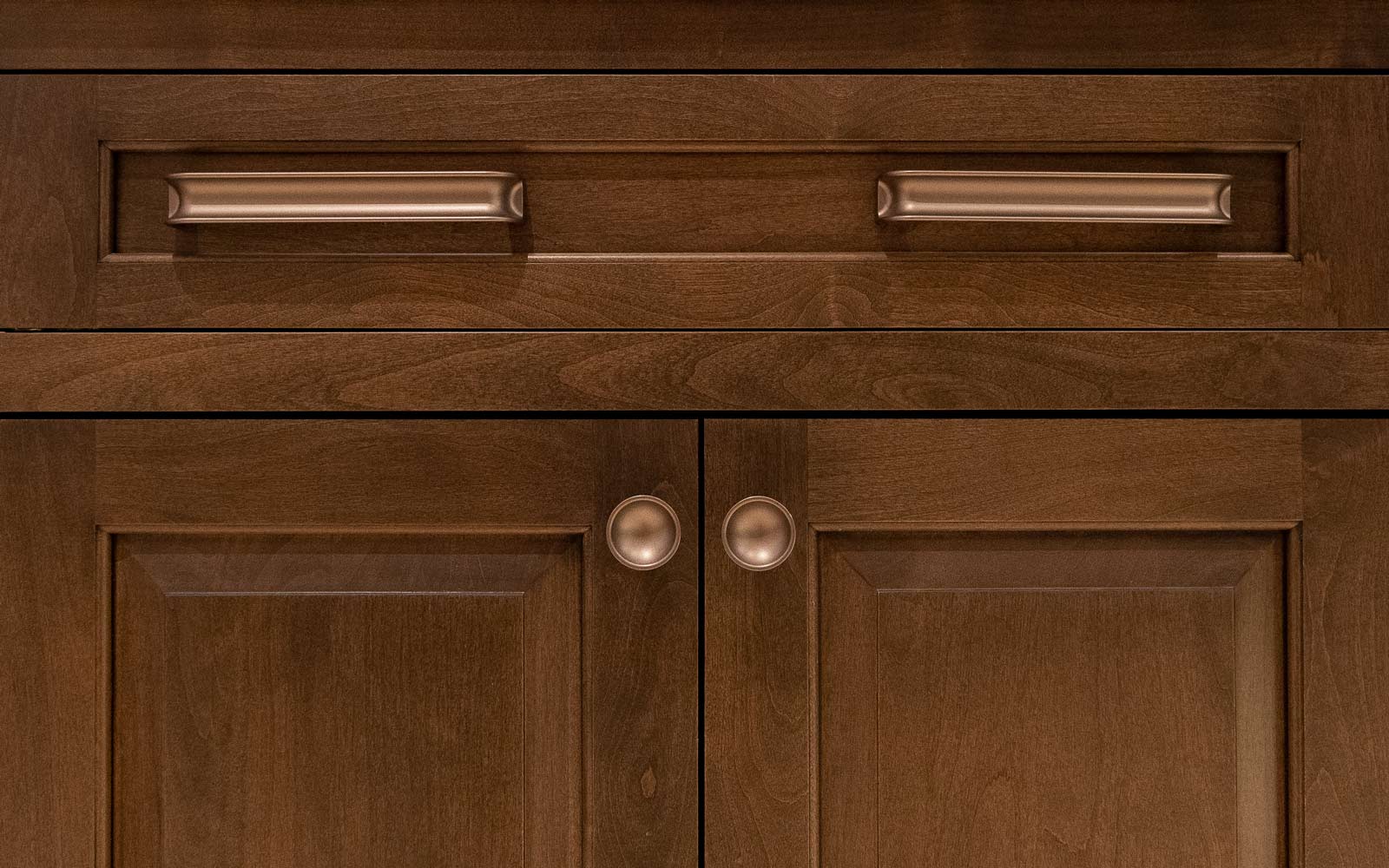
Cabinet Hardware
After spending so much time and effort on choosing the right cabinet, don’t let the hardware be an afterthought! Cabinet hardware refers to your cabinet hinges and handles. There are generally two types of handles: knobs and pulls. It’s up to you to choose from the many available styles and colors.
How to Choose Your Cabinet Hardware
Make sure the kitchen cabinet hardware matches your style. For example, many traditional kitchens use knobs instead of pulls. A cabinet knob is smaller and simpler and won’t distract from any design. By contrast, a drawer pull is a handle that is bigger and better-suited for pulling heavier loads. You can also combine knobs and pulls. For example, you could use knobs for an upper cabinet and pulls for the lower cabinet or heavier doors.
Cabinet hardware is a great opportunity to showcase your creativity. There are so many options for finishes: metal, brushed nickel, bronze, or gold-toned hardware are common choices. But, especially in a modern-style kitchen, you can go for glass, mirrored or brightly colored hardware to add a special accent.
Cabinet Accessories
A cabinet accessory maximizes storage space with different types of organizers. The organizer that you’ll need depends on the cabinet, its size and location, and the items you want to store. There’s no one right way to maximize your storage space, and there are a variety of storage solutions for every cabinet.
Base Cabinet Storage
Due to the depth of a base cabinet, there are many ways to make it more functional. For instance, racks, shelves, and pull-outs all add to the capacity while increasing accessibility.
Think about adding a lazy Susan to a base cabinet in the corner. That way, you can swing the hard-to-reach spaces toward you. Likewise, many organizers help you reach items deep under your sink. In addition, slide-out recycling and trash compartments can fit in a larger base cabinet, creating a neater look for your kitchen.
Popular Accessories
Other popular add-ons can help organize your kitchen. Slide-out baskets, pull-out shelves, and door-mounted organizers free up cabinet space. There are even options to organize that pesky junk drawer. Try adding dividers, silverware storage trays, or a pegboard system.
Stylish, Functional Cabinet Designs
While it might seem like style and function are different considerations, they go hand in hand. A basic but useful cabinet design might make kitchen work a breeze, but it probably won’t make your kitchen feel as personal as it could be.
Gorgeous cabinetry that fits your style but not your needs, on the other hand, may make kitchen work more difficult. Why not have the best of both worlds?
Smart Cabinetry Designs
The key to custom cabinet design is attention to detail. Intent helps guide those details. A key consideration here is how you use your kitchen. If you enjoy cooking or hosting events, you’ll need more space to store all your equipment and supplies.
Kitchen appliances are a necessity, but they also take up a ton of space. A Drury Design consultant can help you create a luxurious style that is as beautiful as it is functional.
Other Considerations
One of the benefits provided by custom cabinet design is a precision fit. This is especially useful for custom appliances. Many luxury kitchen designs use custom cabinets to seamlessly blend appliances and cabinetry. When done properly, it’s impossible to tell what’s a cabinet and what’s an appliance. This luxurious design is only achievable by using custom cabinets.
Your Kitchen Remodel with Drury Design
Remember: your kitchen may not stay your kitchen forever! Don’t forget to take into account resale value when considering the many factors in your guide to choosing cabinets.
But you’re not alone in trying to decide! Request a design consultation today to learn how our client-focused design team can help you achieve your dream kitchen.
Get the Best Team on the Job
To turn your dream bathroom or kitchen remodel into reality, you’ll need to retain the services of an experienced team of professionals. Led by a professional specialist like an NKBA certified designer.
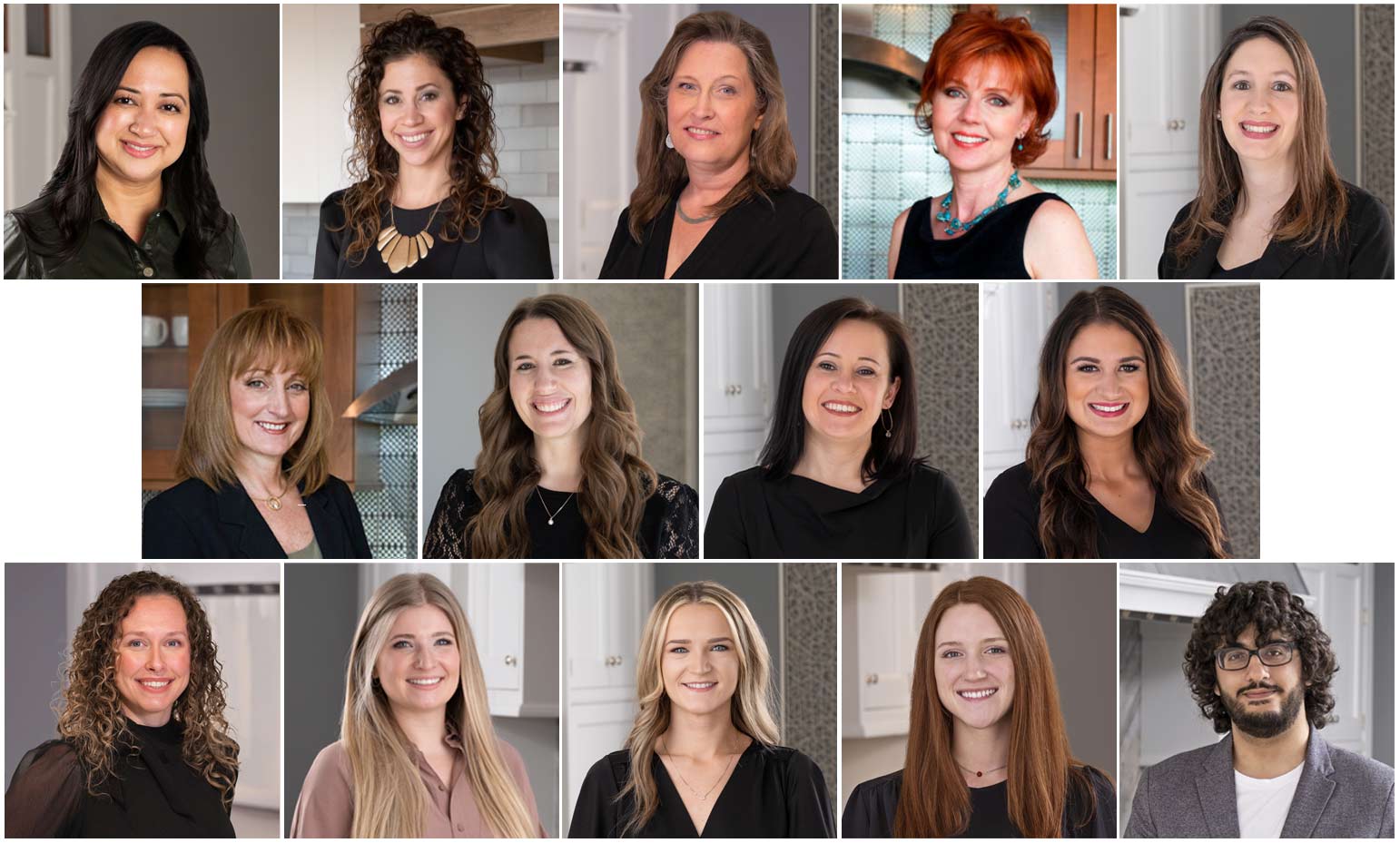
Get in touch with us today for an in-person consultation for your and project based on your budget.
About Drury Design Kitchen and Bath Studio
Founded by Gail Drury, CMKBD in 1987, Drury Design’s Client Focused Design™ approach integrates design recommendations, materials selection, and construction management into one seamless customer design, project management, and build experience. For kitchen, bath, and home remodeling ideas view Drury Design’s design portfolio or stop by the studio at 512 N. Main Street in downtown Glen Ellyn, Illinois.

